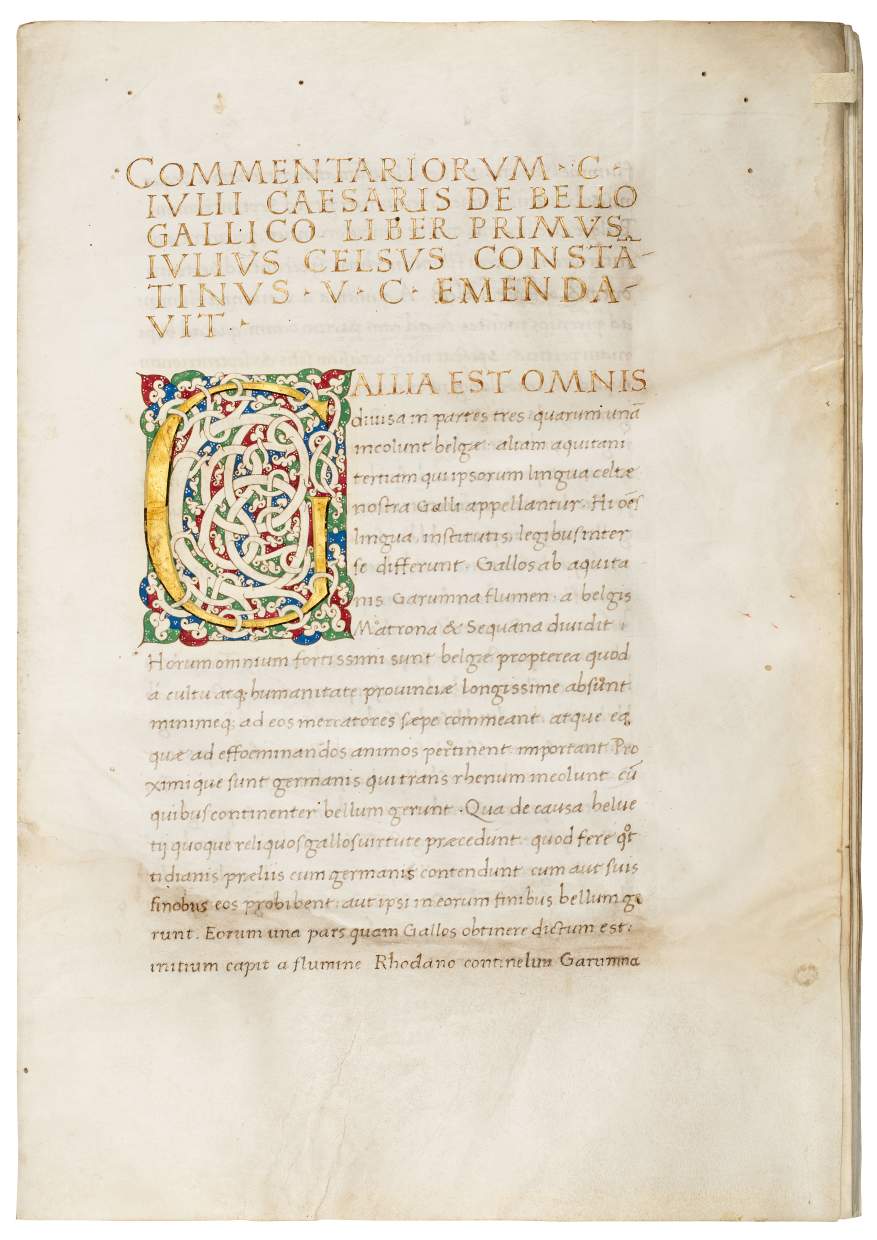Artworks




Caius Julius Caesar, Commentarii de bello Gallico, and 4 other texts
Italy, Milan, c. 1450-1475
345 x 242 mm, manuscript on vellum, illuminated by the Ippolyta Master
fol. 127, De Bello Civili
Hide caption


Caius Julius Caesar, Commentarii de bello Gallico, and 4 other texts
Italy, Milan, c. 1450-1475
345 x 242 mm, manuscript on vellum, illuminated by the Ippolyta Master
Original Italian binding
Hide caption



